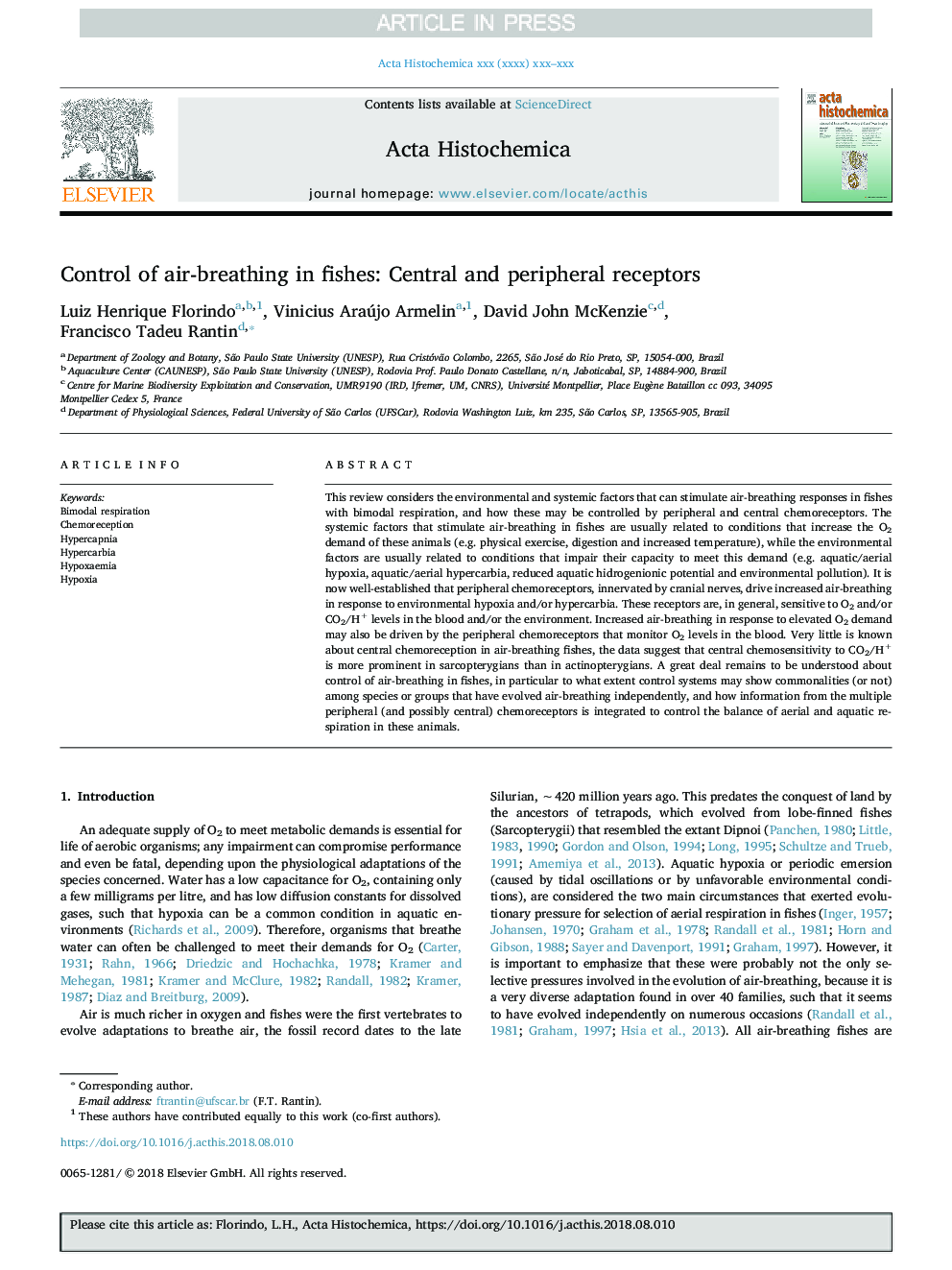| Article ID | Journal | Published Year | Pages | File Type |
|---|---|---|---|---|
| 11007710 | Acta Histochemica | 2018 | 12 Pages |
Abstract
This review considers the environmental and systemic factors that can stimulate air-breathing responses in fishes with bimodal respiration, and how these may be controlled by peripheral and central chemoreceptors. The systemic factors that stimulate air-breathing in fishes are usually related to conditions that increase the O2 demand of these animals (e.g. physical exercise, digestion and increased temperature), while the environmental factors are usually related to conditions that impair their capacity to meet this demand (e.g. aquatic/aerial hypoxia, aquatic/aerial hypercarbia, reduced aquatic hidrogenionic potential and environmental pollution). It is now well-established that peripheral chemoreceptors, innervated by cranial nerves, drive increased air-breathing in response to environmental hypoxia and/or hypercarbia. These receptors are, in general, sensitive to O2 and/or CO2/H+ levels in the blood and/or the environment. Increased air-breathing in response to elevated O2 demand may also be driven by the peripheral chemoreceptors that monitor O2 levels in the blood. Very little is known about central chemoreception in air-breathing fishes, the data suggest that central chemosensitivity to CO2/H+ is more prominent in sarcopterygians than in actinopterygians. A great deal remains to be understood about control of air-breathing in fishes, in particular to what extent control systems may show commonalities (or not) among species or groups that have evolved air-breathing independently, and how information from the multiple peripheral (and possibly central) chemoreceptors is integrated to control the balance of aerial and aquatic respiration in these animals.
Related Topics
Life Sciences
Biochemistry, Genetics and Molecular Biology
Biochemistry
Authors
Luiz Henrique Florindo, Vinicius Araújo Armelin, David John McKenzie, Francisco Tadeu Rantin,
